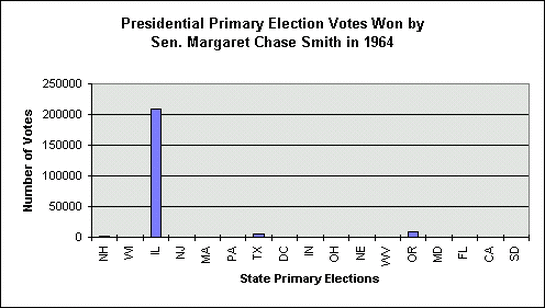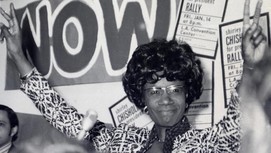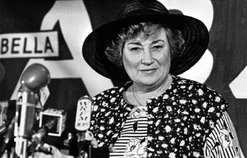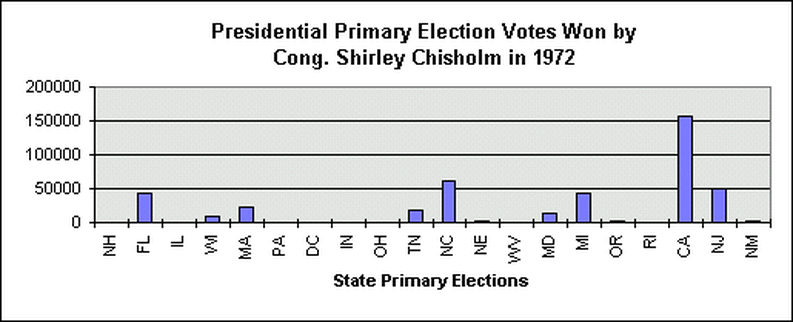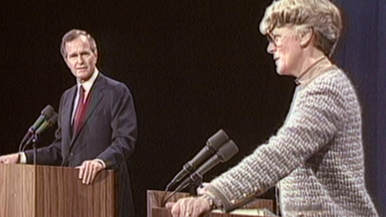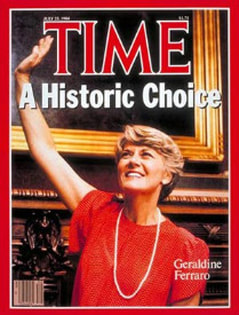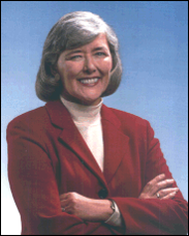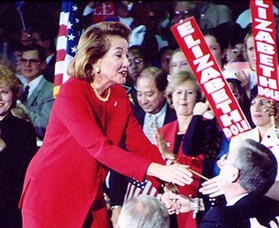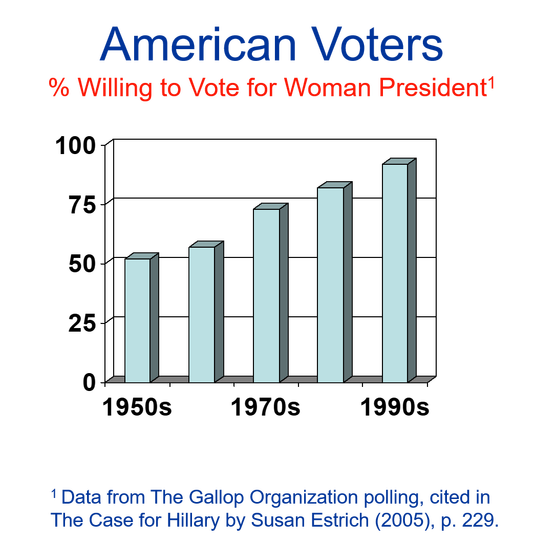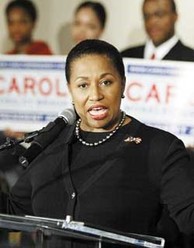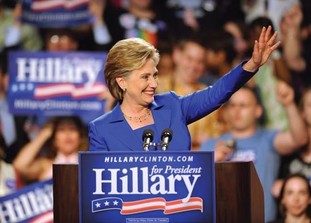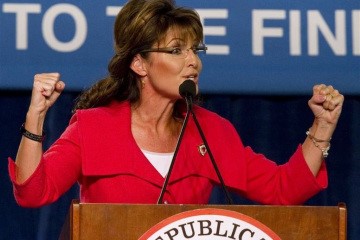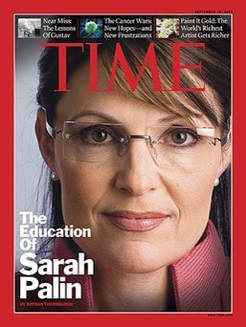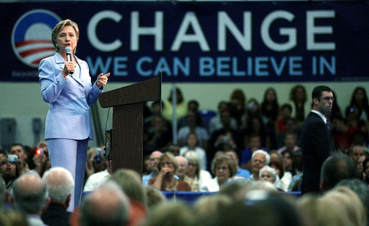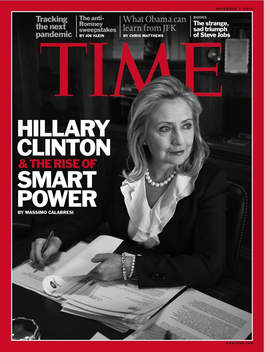Our History: We've Been Campaigning ...
For Over 154 Years!
In 1870, Victoria Claflin Woodhull...
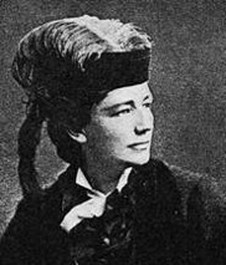 Victoria Claflin Woodhull
Victoria Claflin Woodhull
On April 2, 1870, Victoria Claflin Woodhull announced herself as a candidate for the U.S. presidency in The New York Herald. Thus, the campaign to elect a woman for president began 154 years ago.
Having overcome financial and family challenges, Woodhull established herself as a prominent newspaper owner. When she opened her own stock brokerage firm on Wall Street, she became nationally known. As the first woman to run for U.S. president, she received widespread media coverage. She used the influence her candidacy generated to win the right for women to address Congress. On January 11, 1871, she became the first woman to publicly address Congress--speaking on behalf of women's right to vote.
On May 10, 1872, Woodhull accepted the nomination to run as a candidate for President of the United States on the Equal Rights Party ticket. It was a coalition of labor organizers, women's advocates and others that she founded. An advocate of equal rights for everyone, Woodhull chose Frederick Douglass as her vice presidential running mate.
Woodhull's presidential campaign won great public interest. It was followed nationwide. Regardless of whether she won votes on Election Day--Tuesday, November 5, 1872--Woodhull undoubtedly set the national precedent for women to run for the U.S. presidency. So many American women have followed in her footsteps, its likely impossible to keep track. Here are just a few more.
Having overcome financial and family challenges, Woodhull established herself as a prominent newspaper owner. When she opened her own stock brokerage firm on Wall Street, she became nationally known. As the first woman to run for U.S. president, she received widespread media coverage. She used the influence her candidacy generated to win the right for women to address Congress. On January 11, 1871, she became the first woman to publicly address Congress--speaking on behalf of women's right to vote.
On May 10, 1872, Woodhull accepted the nomination to run as a candidate for President of the United States on the Equal Rights Party ticket. It was a coalition of labor organizers, women's advocates and others that she founded. An advocate of equal rights for everyone, Woodhull chose Frederick Douglass as her vice presidential running mate.
Woodhull's presidential campaign won great public interest. It was followed nationwide. Regardless of whether she won votes on Election Day--Tuesday, November 5, 1872--Woodhull undoubtedly set the national precedent for women to run for the U.S. presidency. So many American women have followed in her footsteps, its likely impossible to keep track. Here are just a few more.
In 1884 & 1888, Belva Ann Lockwood...
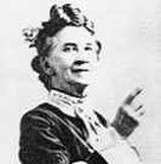
In 1884 and again in 1888, Belva Ann Lockwood ran for U.S. president as a candidate on the Equal Rights Party ticket. She had become nationally-known as the first woman to argue a case before the U.S. Supreme Court. After completing her law degree, the law school refused to award a degree because she was a woman. She had to petition the president of the university, who also happened to be President of the United States, Ulysses S. Grant, to obtain her degree.
Lockwood put her name on several state presidential primary ballots, reportedly receiving 4,149 votes from the all-male electorate in 1884--setting the precedent of women getting on presidential primary ballots and winning votes.
Lockwood put her name on several state presidential primary ballots, reportedly receiving 4,149 votes from the all-male electorate in 1884--setting the precedent of women getting on presidential primary ballots and winning votes.
In 1964, U.S. Senator Margaret Chase Smith...
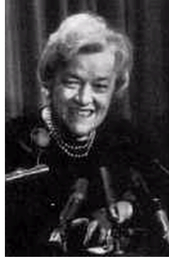
In 1964, Republican Sen. Margaret Chase Smith (Maine) became the first major-party candidate to run for U.S. president. Nationally known as the first woman to serve in both the U.S. House of Representatives and the U.S. Senate, Sen. Smith was respected on both side of the aisle for her national military policy work during and after World War II.
Refusing to accept financial contributions to her campaign, Sen. Smith returned contributions sent by supporters and championed campaign finance reform as a central theme of her presidential campaign. She campaigned heavily in the early primary states, where she believed she could win the most votes. She largely ignored the other states due to her campaign's financial limitations and her refusal to miss Senate votes in Washington, D.C. to be on the campaign trail.
Sen. Smith campaigned in five out of the 17 Republican primaries and won 224,970 votes or 3.8 percent of the total votes cast for Republican presidential candidates in 1964. She finished fifth out of seven candidates in the New Hampshire primary--the first in the nation, with 2,120 votes or 2.3 percent. She skipped the next primary in Wisconsin. Then she finished second among eight candidates in Illinois, with 209, 521 votes or 25.3 percent, after waging her most serious campaign. Thereafter, Smith won votes in Massachusetts, Texas and Oregon. No votes were recorded for Sen. Smith in the Republican primaries in New Jersey, Pennsylvania, the District of Columbia, Indiana, Ohio, Nebraska, Maryland, Florida, California or South Dakota.
As her results demonstrate, Sen. Smith put herself--and women presidential candidates--on the majority-party presidential primary map.
Refusing to accept financial contributions to her campaign, Sen. Smith returned contributions sent by supporters and championed campaign finance reform as a central theme of her presidential campaign. She campaigned heavily in the early primary states, where she believed she could win the most votes. She largely ignored the other states due to her campaign's financial limitations and her refusal to miss Senate votes in Washington, D.C. to be on the campaign trail.
Sen. Smith campaigned in five out of the 17 Republican primaries and won 224,970 votes or 3.8 percent of the total votes cast for Republican presidential candidates in 1964. She finished fifth out of seven candidates in the New Hampshire primary--the first in the nation, with 2,120 votes or 2.3 percent. She skipped the next primary in Wisconsin. Then she finished second among eight candidates in Illinois, with 209, 521 votes or 25.3 percent, after waging her most serious campaign. Thereafter, Smith won votes in Massachusetts, Texas and Oregon. No votes were recorded for Sen. Smith in the Republican primaries in New Jersey, Pennsylvania, the District of Columbia, Indiana, Ohio, Nebraska, Maryland, Florida, California or South Dakota.
As her results demonstrate, Sen. Smith put herself--and women presidential candidates--on the majority-party presidential primary map.
On The 100-Year Anniversary...
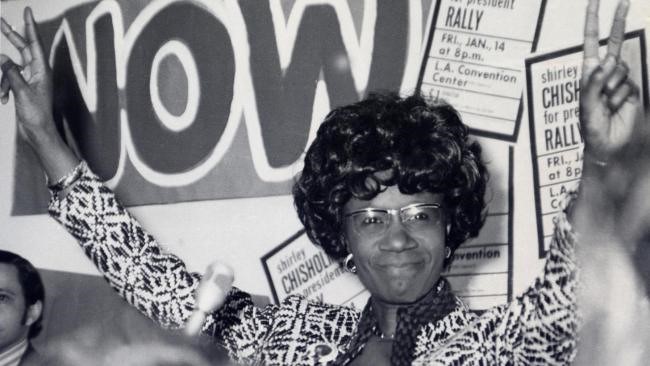
In 1972, the 100-year anniversary of Woodhull's historic presidential campaign, Cong. Shirley Chisholm (New York), Cong. Patsy Mink (Hawaii), and Cong. Bella Abzug (New York) ran together for the Democratic nomination for U.S. president.
While the record suggests that Cong. Abzug dropped out before the primary elections began, Cong. Mink won a total of 8,000 votes in at least two primaries--New Hampshire and Oregon. Cong. Shirley Chisholm continued on to shatter historic records for women in the presidential primaries. She even brought delegates to the 1972 Democratic National Convention in Florida.
Educated at Columbia University in New York, Cong. Chisholm became well-known to TV audiences across the country as the first African American woman elected to serve in the U.S. Congress. Also the first African American to run for a major party's presidential nomination, Cong. Chisholm played an active role in shaping Viet Nam War policy--and campaigned vigorously to end the war.
Starting with $44,000.00, Cong. Chisholm actively raised money to support her presidential campaign. She waged a competitive campaign, relying heavily on volunteers. Like Sen. Smith, Cong. Chisholm focused on states where she had the best chances of winning votes. She skipped the New Hampshire primary and focused heavily on states with large populations of African Americans, women's rights advocates, and liberal votes.
Cong. Chisholm's strategy paid off. She won the New Jersey Democratic primary with 51,433 votes or 66.9 percent. She campaigned in 14 out of 21 primaries, winning 430,703 votes or 2.7 percent of the total votes cast for Democrats. She finished third out of five in North Carolina, with 61,723 votes or 7.5 percent; fourth out of nine in California, with 157,435 votes or 4.4 percent; fourth out of 11 in Tennessee, with 18,809 votes or 3.8 percent; fifth out of 12 in Massachusetts, with 22,398 votes or 3.6 percent; and seventh out of 10 in Florida, with 43,989 votes or 3.4 percent.
She won 9,198 votes in Wisconsin without even campaigning in the state, and won additional votes in Illinois, Pennsylvania, Nebraska, Maryland, Michigan, Oregon, and New Mexico. No votes were recorded for Cong. Chisholm in New Hampshire, the District of Columbia, Indiana, Ohio, West Virginia, Rhode Island, or South Dakota.
Cong. Chisholm's strong primary showing won her 152 delegate votes or five percent of the delegate votes cast at the Democratic National Convention in 1972--an unprecedented historic victory for women on the 100th anniversary of the campaign to elect women to the U.S. presidency.
While the record suggests that Cong. Abzug dropped out before the primary elections began, Cong. Mink won a total of 8,000 votes in at least two primaries--New Hampshire and Oregon. Cong. Shirley Chisholm continued on to shatter historic records for women in the presidential primaries. She even brought delegates to the 1972 Democratic National Convention in Florida.
Educated at Columbia University in New York, Cong. Chisholm became well-known to TV audiences across the country as the first African American woman elected to serve in the U.S. Congress. Also the first African American to run for a major party's presidential nomination, Cong. Chisholm played an active role in shaping Viet Nam War policy--and campaigned vigorously to end the war.
Starting with $44,000.00, Cong. Chisholm actively raised money to support her presidential campaign. She waged a competitive campaign, relying heavily on volunteers. Like Sen. Smith, Cong. Chisholm focused on states where she had the best chances of winning votes. She skipped the New Hampshire primary and focused heavily on states with large populations of African Americans, women's rights advocates, and liberal votes.
Cong. Chisholm's strategy paid off. She won the New Jersey Democratic primary with 51,433 votes or 66.9 percent. She campaigned in 14 out of 21 primaries, winning 430,703 votes or 2.7 percent of the total votes cast for Democrats. She finished third out of five in North Carolina, with 61,723 votes or 7.5 percent; fourth out of nine in California, with 157,435 votes or 4.4 percent; fourth out of 11 in Tennessee, with 18,809 votes or 3.8 percent; fifth out of 12 in Massachusetts, with 22,398 votes or 3.6 percent; and seventh out of 10 in Florida, with 43,989 votes or 3.4 percent.
She won 9,198 votes in Wisconsin without even campaigning in the state, and won additional votes in Illinois, Pennsylvania, Nebraska, Maryland, Michigan, Oregon, and New Mexico. No votes were recorded for Cong. Chisholm in New Hampshire, the District of Columbia, Indiana, Ohio, West Virginia, Rhode Island, or South Dakota.
Cong. Chisholm's strong primary showing won her 152 delegate votes or five percent of the delegate votes cast at the Democratic National Convention in 1972--an unprecedented historic victory for women on the 100th anniversary of the campaign to elect women to the U.S. presidency.
In 1984, Democratic Vice Presidential Nominee Geraldine Ferraro...
In 2008, Republican Vice Presidential Nominee Sarah Palin...
In 2008, Former Presidential Candidate Hillary Clinton
Stumped for Obama & Later Served As Secretary of State...
For more information, visit the Center for American Women and Politics...
Copyright Madam President PAC 2023. Paid for by Madam President PAC and not authorized by any candidate or candidate's committee.
